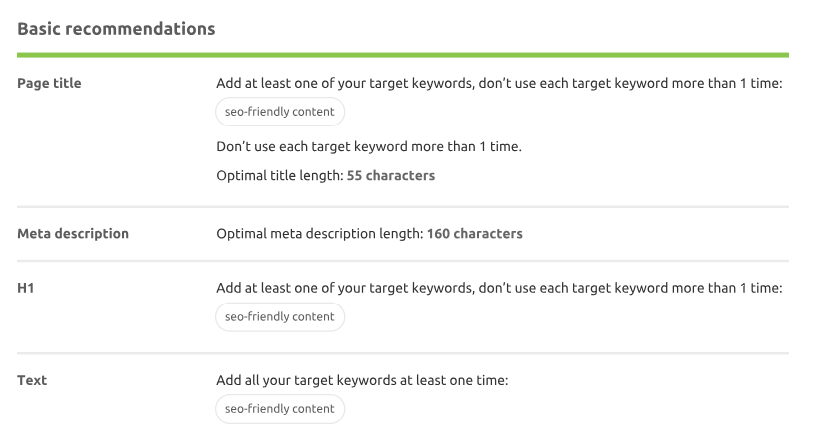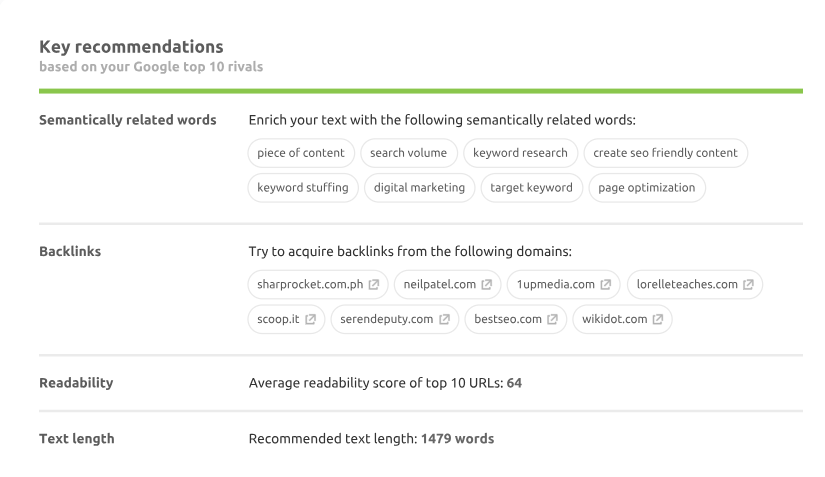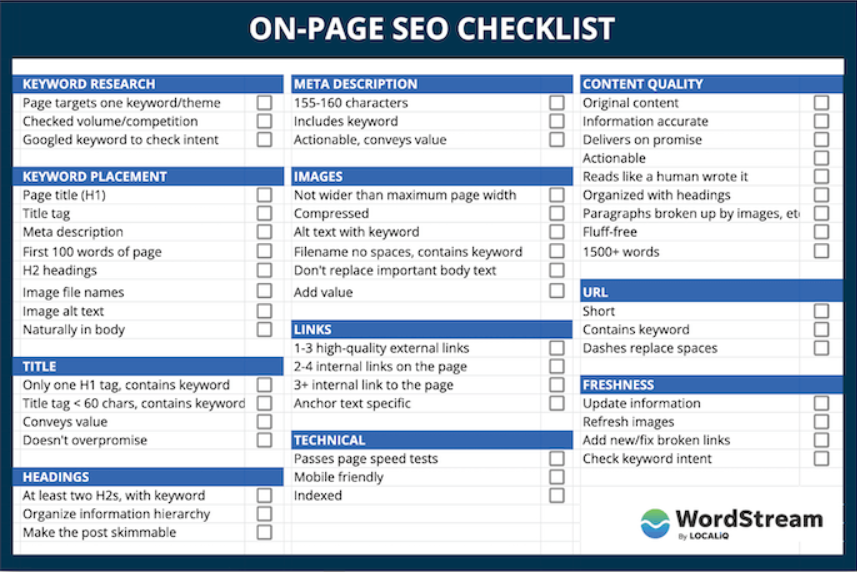Discover top guides, trends, tips and expertise from AIO Writers
Customize Your SEO Content Template for Better Rankings
Julia McCoy
Wednesday, 7th Jun 2023
SEO can provide many benefits to businesses, including increased web traffic and drawing more qualified leads through the sales funnel. But according to a survey of small businesses in the United States and Canada, almost 60% of SMBs have no real SEO strategy.
If you’re planning to invest in SEO this year but don’t know where to start, an SEO content template can help.
Your SEO article template is your secret weapon for creating amazing content that both readers and search engines will love.
But what is an SEO content template exactly?
SEO article templates typically guide the creation of SEO content. Free blog post templates eliminate the pain of having to start an article from scratch.
In this blog post, you will learn the basic components of how to create an SEO content template to speed up your content creation process.
Let’s get started.
Table Of Contents:
- What is an SEO Content Template?
- 10 Benefits of an SEO Content Template
- How to Fill in Your SEO Content Template and Write Amazing Content
- More Tips to Make Your SEO Content Template Beyond Incredible
- Conclusion
What is an SEO Content Template?
Similar to an SEO content brief template, an SEO content template is like a blueprint for creating content that ranks higher in search results and drives more traffic to your site.
It helps you consistently structure your articles, blog posts, and other web content to make them more appealing to both readers and search engines.
The goal is simple: increase visibility, drive traffic, and boost conversions.
Tip: Include an SEO content template inside your content briefs to help your writers properly structure and optimize your content.
Components of an Effective SEO Content Template
Here are some common elements typically found in an SEO content template:
Target keywords: The primary keyword is a key phrase that the content aims to rank for in search engine results. Free blog post templates also include secondary keywords to help Google understand what your article is about.
Title tag: The title tag is an HTML element that specifies the title of a webpage. It should include your primary keyword to signal relevance to search engines and be compelling enough to entice users to click through to your site.
Meta description: The meta description is a 160-character summary that appears below the title tag in search engine results pages. It should also include the primary keyword and provide a concise and persuasive description of the content — giving users a sneak peek of what they can expect to find on your site.

Screenshot from Semrush
Heading structure: Your SEO template may suggest a hierarchy of headings (H1, H2, H3, etc.) to structure the content and make it easier for search engines to understand the content’s organization and importance.
- H1 tag: Use this heading tag for the main topic or question being addressed on the page, incorporating important keywords related to your subject matter.
- H2-H6 tags: Organize subtopics under appropriate headings with secondary keywords incorporated naturally into each one to make it easier for readers and Google to navigate and understand your content.
Word count: Your SEO article template may recommend an optimal word count or content length to ensure the content is comprehensive and provides value to readers. Longer content often performs well in search engine rankings.
Keyword usage: Your SEO template may provide guidelines on how to incorporate primary and secondary keywords naturally throughout the content, including in headings, subheadings, paragraphs, and image alt tags. Be sure not to overdo it to maintain a smooth flow that doesn’t sacrifice readability or user experience.
Internal and external links: Your SEO content template may include relevant internal links (links within your website) and external links (links to other authoritative websites) to provide additional context and value to readers and help search engines understand the context of your content.

Screenshot from Semrush
Images and alt text: A good SEO content template will also include guidelines for adding relevant images to the content, along with properly optimized alt text to help search engines understand the image’s content since they cannot “see” images.
Readability and formatting: Your SEO article template might include tips for maintaining a clear and easy-to-read writing style. It may suggest using bullet points, short paragraphs, and formatting options like bold or italic text to enhance readability.
Free SEO content templates vary in complexity and can be customized based on specific goals, target audiences, and SEO best practices. They serve as a guide to ensure that content is optimized for search engines while providing value to readers.

10 Benefits of an SEO Content Template
Creating content with an SEO blog post template can offer several benefits:
- Consistency: An SEO content template helps maintain a consistent structure and format across your blog posts, making it easier for search engines to scan and understand them. By following a standardized layout, each post also looks more professional and visually appealing.
- Ease of use: With a clear framework in place, you can streamline the content creation process by knowing exactly what elements need to be included and where they should go within each piece.
- Time-saving: With an SEO article template, you don’t have to start from scratch every time you write a new blog post. It provides a pre-defined structure that you can simply fill in with your content, saving you time and effort in formatting and organizing the post.
- Better rankings: A well-designed blog post template can include SEO elements, such as meta tags, heading structures, and keyword placement. This helps optimize your blog posts for search engines, increasing the chances of higher rankings and organic traffic.
- Improved readability: Templates often include formatting guidelines that enhance the readability of your blog posts. This can include suggestions for using headers, bullet points, and whitespace, making it easier for readers to scan and comprehend the content.
- Better user engagement: Your SEO content templates can include elements that encourage user engagement such as call-to-action buttons or social sharing buttons. These features help promote interaction with your content and increase its reach.
- Branding: A blog post template can be designed to align with your brand’s visual identity. By incorporating your logo, colors, fonts, and other branding elements, you create a consistent brand experience for your readers.
- Organization and structure: Your SEO content template provides a framework for organizing your thoughts and ideas. They can include sections like introduction, main content, conclusion, and author bio, helping you present information in a logical and coherent manner.
- Collaboration: If you have a team of writers or contributors, a blog post template can facilitate collaboration and streamline the content creation process. Everyone can work from the same template, ensuring a cohesive style and structure across all posts.
- Customization: While using an SEO content template provides a foundation, you can still customize it to suit your specific needs. You can modify sections, add or remove elements, and adapt the template to fit your unique content and goals.
Overall, an SEO content template saves time, maintains consistency, and improves the readability and engagement of your blog posts. It offers a structured framework that simplifies the content creation process and helps you deliver high-quality and visually appealing blog content.
Now that we’ve covered what an SEO content template is, let’s get to writing optimized content.

How to Fill in Your SEO Content Template and Write Amazing Content
Effective SEO content requires creativity, research, and strategy.
To stand out in search engine results pages, follow these simple yet powerful steps as you fill in your SEO content template:
Know Your Audience
Identify the needs and preferences of your target audience by creating buyer personas based on real data and market research.
Keyword Research
Identify specific keywords and phrases that your target audience is searching for.
Use tools like Google Keyword Planner or BrandWell to find keywords with a decent monthly search volume and low competition.
Understand User Intent
Consider the search intent behind your target keywords.
Are users looking for information, product reviews, or seeking to make a purchase?
Align your content with the user’s intent to provide the most relevant and valuable information.
Create an Engaging Title Tag
Craft a compelling title tag that includes your target keyword. The title tag appears as the clickable headline in search engine results, so make it attention-grabbing and concise, ideally within 60 characters.
Write a Persuasive Meta Description
The meta description is a summary that appears below the title tag. Include your main keyword and create a concise, persuasive description within 160 characters to entice users to click through to your content.
Focus on Quality and Value
At the heart of your SEO content strategy is offering value for your readers. Write content that addresses their needs, answers their questions, or provides solutions to their problems.
The better the content, the more likely it will be shared and linked to, improving its search engine visibility.
Keyword Placement
Incorporate your target keyword naturally throughout the content. Place it in the introduction, headings, subheadings, and throughout the body of the content.
A word of caution: avoid keyword stuffing! Google frowns upon this practice so it can negatively impact your ranking in search engines, not to mention turn off readers.
Use Synonyms and Related Keywords
You don’t have to write your main keyword 20 times. Using synonyms and related keywords throughout your content is good SEO practice — making your posts more comprehensive and relevant.
Related keywords can help search engines understand the context of your content and improve its visibility for a broader range of search queries.
Internal and External Linking
Building topic clusters is one way to establish authority in your niche. If you have published blog posts that are related to one topic, link them together through internal links to provide Google with additional context and improve the navigation of your site.
Additionally, consider including external links to authoritative sources or relevant websites that support your content.
Optimize Images
No one wants to read a block of text containing 3,000 words. Visuals help make your content more enjoyable to read so feel free to add images, infographics, charts, and videos to your content strategy.
Optimize images by compressing their size to improve page loading speed, and use descriptive file names and alt text containing relevant keywords.
Write for Readability
Make your content easy to read by using short paragraphs, bullet points, and subheadings. Use a conversational tone, and break complex ideas into digestible chunks.
Consider your audience and write the way you speak to them.
Proofread and Edit
Before publishing, make sure you go through your blog post one last time. Even if you’re using an AI writing assistant like Grammarly, always proofread your content to spot grammar and spelling errors that could ruin your brand reputation.
Ensure that sentences flow smoothly and are free from any inconsistencies. Fact-checking helps improve the overall quality of your content and enhances your credibility.
Remember, while optimizing for search engines is important, creating valuable and engaging content for your readers should also be a priority. Strive to meet their needs and provide a positive user experience.
By combining SEO best practices with high-quality content, you can increase your chances of ranking well and attracting organic traffic to your website.

Sample on-page SEO checklist from Wordstream
More Tips to Make Your SEO Content Template Beyond Incredible
Remember: Your SEO content template will only be as effective as the strategy behind it.
The strategy will drive the success of your blog posts and SEO efforts. With that in mind, here are some additional tips that will influence how you create and fill out your template.
Understand Keywords and Their Role in SEO Content
Your SEO content template will be ineffective if you don’t start with the right keywords.
Keywords are the backbone of any SEO strategy. These words or phrases are what users type into search engines when looking for information, which is why they are crucial for improving your website’s visibility in search engines like Google.
Before you create a template for your team of content writers, first make sure you’re targeting the right keywords for your specific audience and industry.
Finding the Right Keywords
Brainstorm topics related to your business or industry and use keyword research tools like Google Keyword Planner or BrandWell to find suitable keywords.
Relevance and Ranking
Keywords indicate the topics and subjects covered in your content. By incorporating relevant keywords, search engines can better understand what your content is about, increasing the chances of ranking higher in search results for those specific keywords.
Search Intent
Keywords provide insights into the intent behind users’ search queries. By understanding the intent, you can align your content to meet their needs effectively.
For example, if users are searching for “best running shoes,” your content can focus on reviewing and recommending running shoes.
Analyzing Keyword Metrics: Search Volume and Competition
Selecting high-quality keywords involves analyzing two key metrics: search volume and competition level.
- Search volume: Look for keywords with high search volume to ensure that your content reaches a wide audience.
- Competition level: Choose keywords with low competition to increase your chances of ranking higher in search results.
 Long-Tail Keywords: Your Secret Weapon
Long-Tail Keywords: Your Secret Weapon
Long-tail keywords are more specific and often consist of three or more words. Incorporating long-tail keywords in your content allows you to target a more niche audience, which may have a lower search volume but higher conversion potential.
Natural Language and Semantic Search
With advancements in search engine algorithms, search engines have become better at understanding natural language and semantic search. This means that instead of obsessively repeating a single keyword, it is important to use variations, synonyms, and related terms to create content that is comprehensive and relevant.
Remember, while keywords are essential, the focus should always be on creating valuable, informative, and engaging content for your audience. By striking the right balance between incorporating keywords and delivering quality content, you can enhance your SEO efforts and improve your website’s visibility in search engine results.
Analyze Your Competitors’ SEO Strategies
Want to outrank your competitors in search engine results? Start by analyzing their SEO strategies. Once you have this information, you can use it in your SEO content template to help your writer or creator understand how to create better content than what’s out there.
- Use tools like SEMrush or Ahrefs to identify your top competitors in your industry.
- Once you’ve identified them, analyze their on-page SEO tactics, content quality and strategy, backlink profile, social media presence, and technical SEO performance.
- Assess their title tags, H1 tags, and meta descriptions to see if they’re using relevant keywords and engaging headlines.
- Analyze the kind of material they’re putting out there, how frequently they post fresh content, and if there are any gaps in their topics that you can take advantage of.
- Examine their backlink profile and identify potential link-building opportunities.
- Look at their social accounts and measure how much attention they’re getting.
By analyzing your competitors’ strategies, you can learn from both their successes and failures and gain an edge in the search engine rankings.
Conclusion
Your SEO content template is a powerful tool that can streamline your content creation process and elevate your SEO efforts.
By providing a structured framework, templates ensure consistency and maintain a professional appearance for your blog posts. They enable you to optimize your content for search engines, engaging readers with valuable information while improving your chances of ranking higher in search results.
But just like human writers, SEO templates are slowly becoming obsolete. As AI continues to sweep every niche and industry out there, the task of creating and using an SEO article template is no longer the best way to produce high-quality, SEO-friendly content.
BrandWell can save you an enormous amount of time by automating the entire content creation process. All you have to do is input your seed keyword and the machine will take care of the rest. Within minutes you’ll have an original, research-backed, fully formatted website copy or blog article that’s ready to dominate the SERPs.

UNLOCK YOUR POTENTIAL
Long Headline that highlights Value Proposition of Lead Magnet
Grab a front row seat to our video masterclasses, interviews, case studies, tutorials, and guides.

 Long-Tail Keywords: Your Secret Weapon
Long-Tail Keywords: Your Secret Weapon

